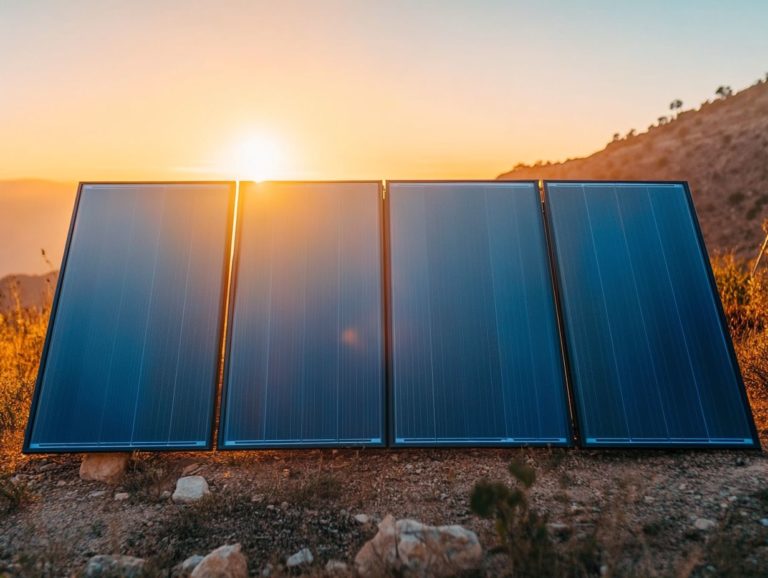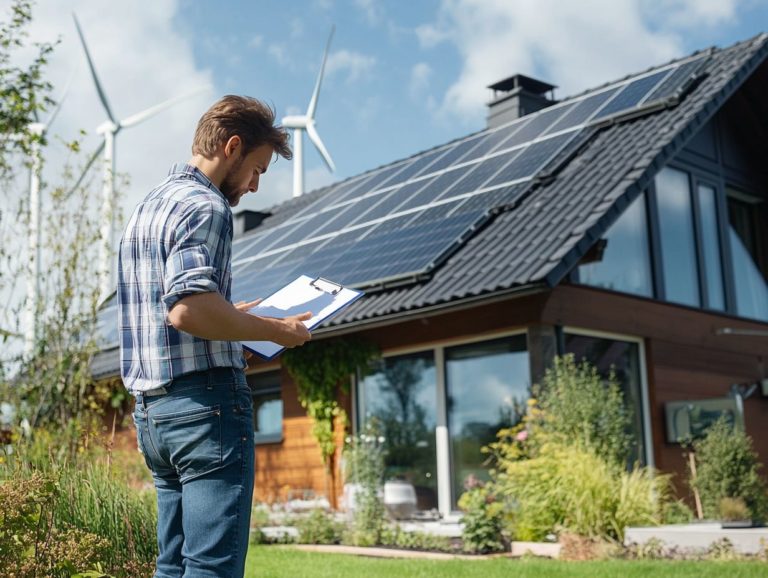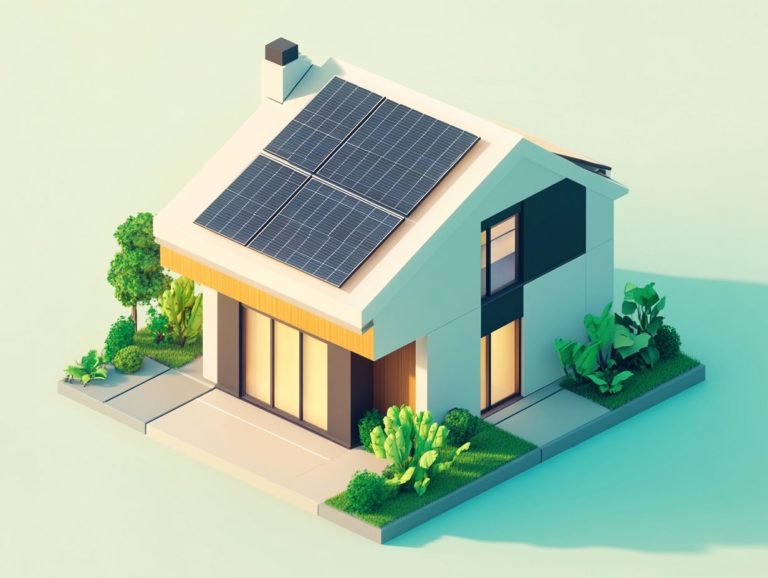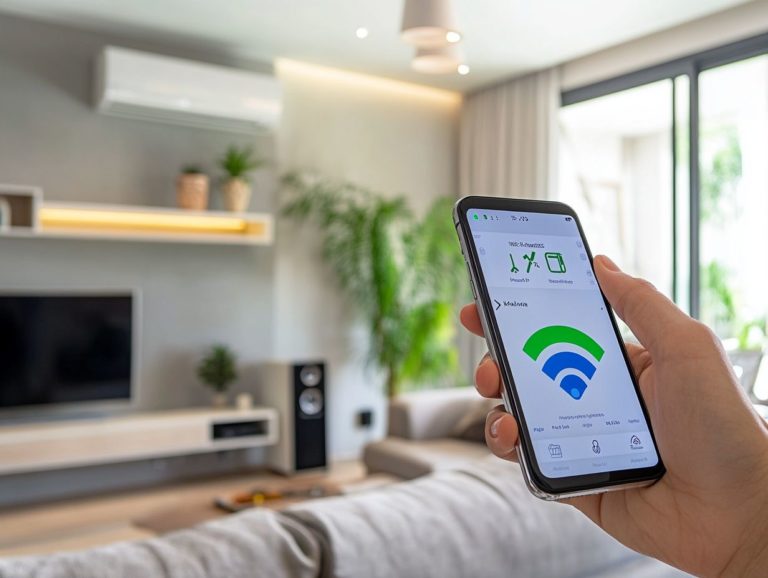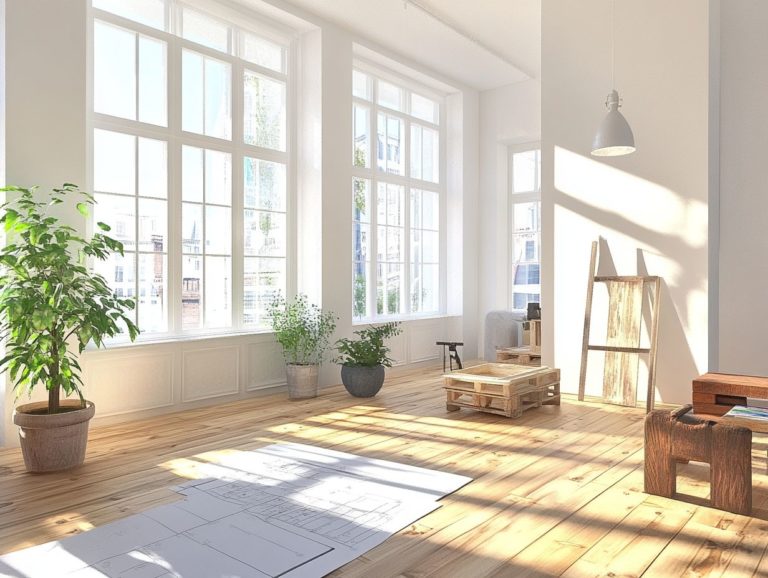What is a Net Zero Home?
Net zero homes are the future! These innovative homes produce as much energy as they consume, paving the way for a sustainable lifestyle, especially in the context of climate change and the ongoing COVID-19 pandemic.
This article delves into the definition and core principles of net zero homes, showcasing their impressive environmental and financial advantages. You ll discover essential design elements and important construction considerations, factors that impact affordability, and practical tips for maintaining energy efficiency, including insights on low flow water fixtures that contribute to sustainability.
Whether you re contemplating the construction of your own net zero home or simply exploring the realm of sustainable living, this guide provides valuable insights into the transformative world of net zero homes.
Contents
Exciting Key Takeaways:
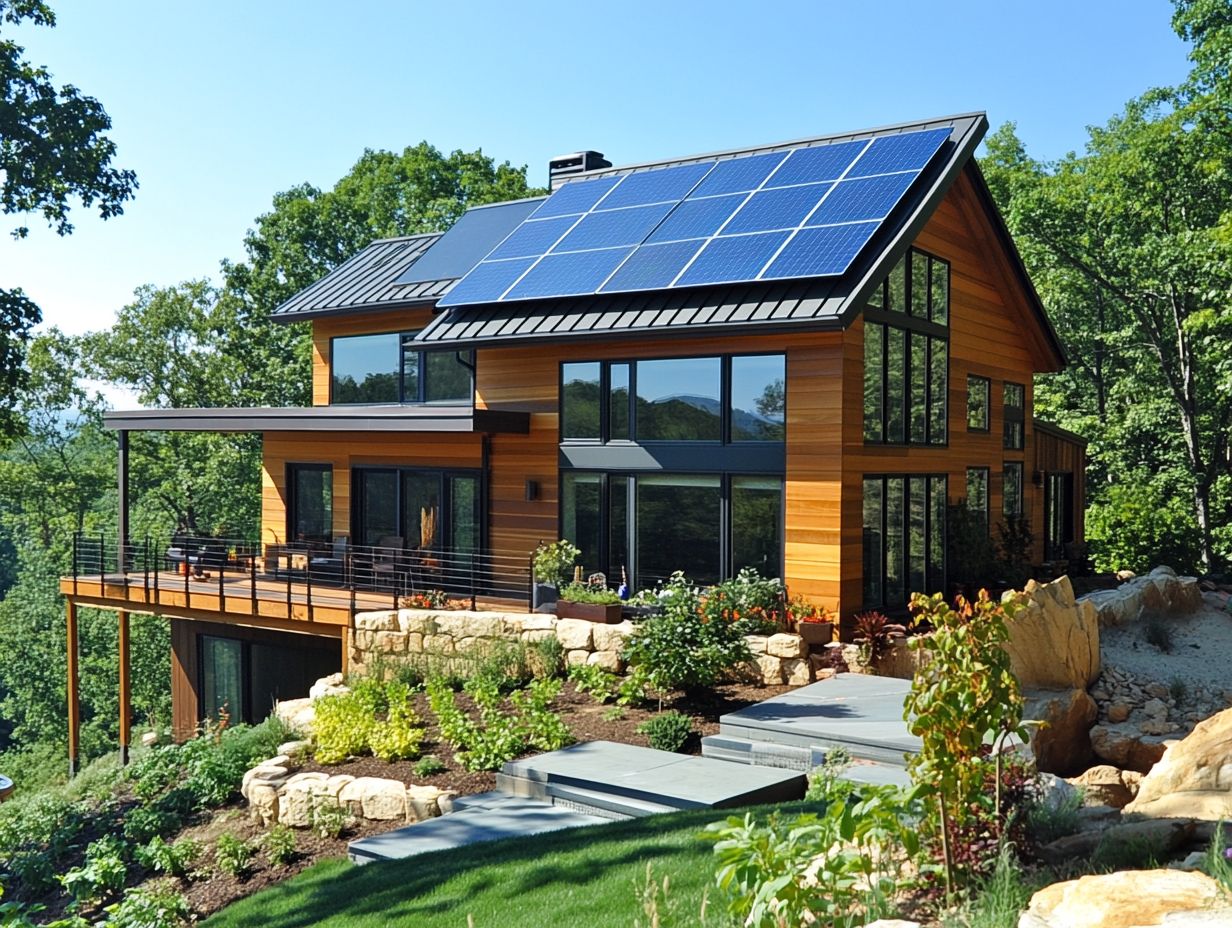
- Net zero homes are designed and built to produce as much energy as they consume, resulting in a carbon-neutral home.
- Living in a net zero home has numerous benefits, including reducing environmental impact and saving on energy costs.
- When designing and building a net zero home, key features such as insulation, solar panels, and energy-efficient appliances should be considered.
Understanding Net Zero Homes
Understanding net zero homes involves grasping the concept of designing and constructing buildings that generate as much energy as they consume over the course of a year. This significantly reduces their carbon footprint during operation.
These innovative, eco-friendly homes represent the pinnacle of sustainable design and energy-efficient architecture. By marrying advanced technologies with renewable energy sources, they reach net-zero energy use.
Architects and mechanical engineers collaborate seamlessly to integrate heating, ventilation, and air conditioning (HVAC) systems and smart home monitoring systems that enhance user experience and energy management. This thoughtful integration leads to remarkable reductions in energy bills and carbon dioxide emissions, making net zero homes not just an aspiration but a practical reality for the environmentally conscious homeowner.
Definition and Concept
The idea of net zero homes centers on crafting buildings that achieve a perfect balance between energy consumption and production, primarily by harnessing renewable energy sources. These homes are carefully built to reduce carbon emissions while providing comfortable living environments through advanced energy-efficient strategies.
The importance of incorporating renewable energy solutions, such as solar panels and wind turbines, cannot be overstated; they are crucial for tapping into natural resources to produce clean electricity. By embracing these practices, you not only play an active role in reducing your carbon footprint but also benefit from lower energy costs over time.
Net zero homes typically feature high-performance insulation and energy-efficient appliances, further enhancing their sustainability. Thus, your journey toward net zero living not only supports environmental stewardship but also fosters a healthier lifestyle for you and the planet.
Benefits of Living in a Net Zero Home
Living in a net zero home presents a wealth of benefits, particularly when it comes to your finances and long-term energy savings. You ll relish lower energy bills, thanks to the energy-efficient appliances and renewable energy systems seamlessly integrated into these eco-friendly abodes.
Not only does this lead to substantial savings, but it also allows you to make a meaningful contribution to the environment by reducing carbon dioxide emissions. You may also find tax incentives for investing in sustainable design features, enhancing both the affordability and allure of net zero living.
Ready to take the leap into sustainable living? Start your journey toward a net zero home today!
Environmental and Financial Advantages

The environmental and financial benefits of living in a net zero home are truly remarkable, especially when you consider the energy savings and reduced carbon dioxide emissions. You ll enjoy lower energy bills while making a positive impact on the environment through minimized energy consumption and enhanced sustainability.
By harnessing renewable energy sources like solar panels and geothermal systems, along with efficient insulation, your home not only reduces its reliance on fossil fuels but also significantly decreases its carbon footprint. You’ll be thrilled to see how your initial investment in energy-efficient systems pays off over time, resulting in substantial reductions in utility costs.
You may also find tax incentives for eco-friendly upgrades, motivating even more individuals to embrace practices that promote energy conservation and contribute to a healthier planet. Ultimately, this shift toward net zero living creates a win-win scenario for both your finances and the environment.
Designing and Building a Net Zero Home
Designing and building a net zero home requires a solid understanding of how to save energy and an integrated approach that enhances overall building performance. This process involves careful planning and collaboration among architects, energy consultants, and builders to create homes that minimize energy consumption while maximizing thermal comfort.
Essential features include the use of top-tier insulation materials, energy recovery ventilators, and precise energy models that evaluate energy usage patterns, guiding the entire construction process.
Key Features and Considerations
When designing a net zero home, focus on several key features that enhance both comfort and efficiency, including advanced energy modeling tools. Energy-efficient design, top-notch insulation materials, and the seamless integration of renewable energy sources are essential for achieving optimal thermal comfort while minimizing energy consumption.
Prioritizing energy-efficient windows windows designed to keep heat in and cold out and smart home monitoring systems will greatly enhance your building’s performance, reducing your reliance on traditional energy sources.
Choosing the right insulation whether it’s spray foam or cellulose is crucial. Don t overlook the installation process; proper installation is vital to minimizing air leaks, which is essential for maintaining temperature stability.
The windows you select can make a significant difference. Opting for triple-glazed or low-emissivity types not only enhances energy retention but also invites in natural daylight, creating a warm and inviting atmosphere.
Integrating renewable energy systems like solar panels or geothermal heating will meet your energy needs and align seamlessly with your sustainability goals. Adding smart technology gives you the power to monitor and adjust your energy usage, ensuring a comfortable living space while significantly cutting down on utility costs.
Cost and Affordability of Net Zero Homes
The cost and affordability of net zero homes are influenced by various factors, such as the construction process, project management efficiency, and the seamless integration of energy-efficient design principles. Although the initial investment may be higher compared to traditional homes, many homeowners discover that the long-term savings on energy bills, along with available tax incentives, can considerably alleviate these expenses.
Incorporating renewable energy systems and energy-efficient windows not only boosts sustainability but also makes these eco-friendly homes more budget-friendly in the long run.
Join the movement towards sustainable living today!
Factors That Affect Cost and How to Make It More Affordable
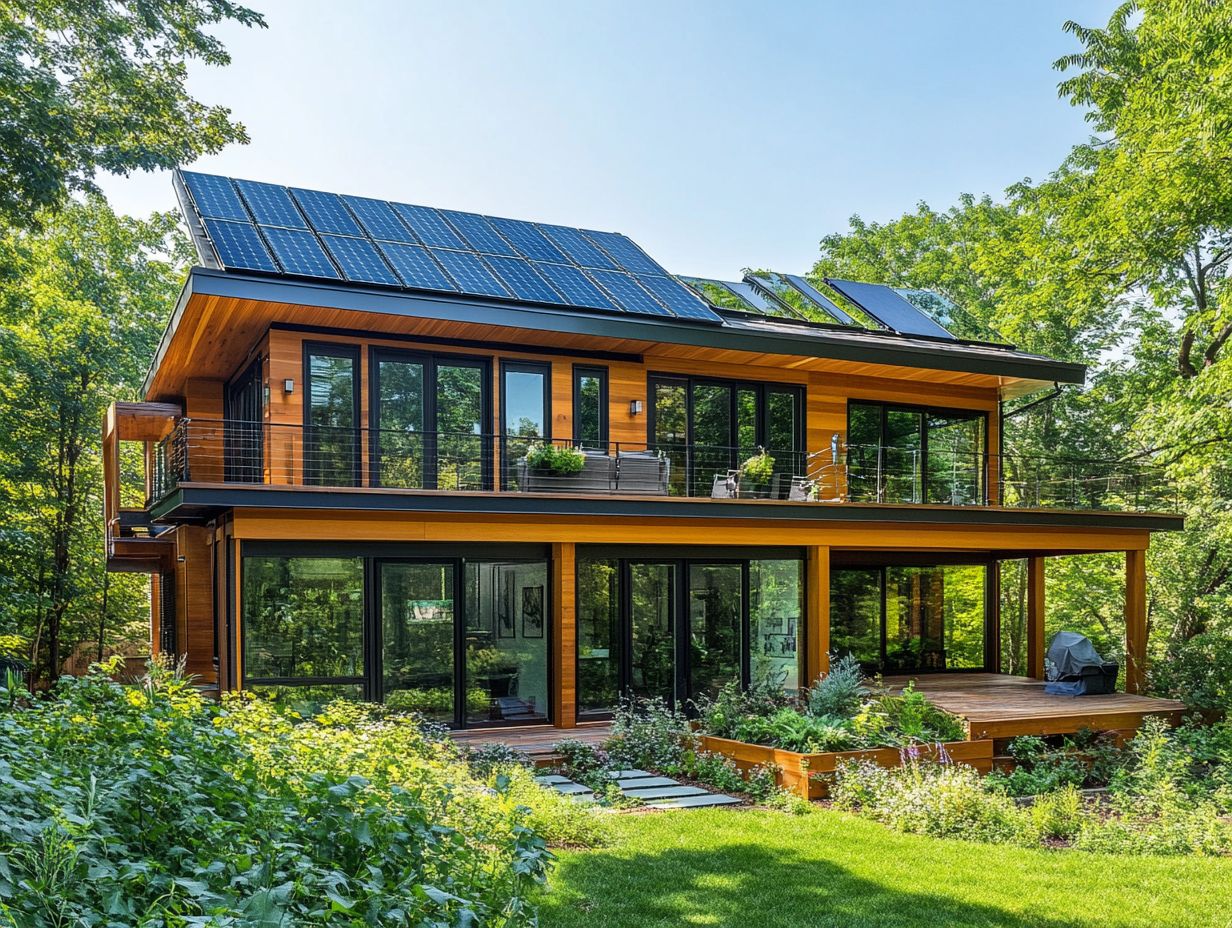
Several cost factors influence the affordability of net zero homes, including your initial investment in renewable energy sources and energy-efficient design features like high-quality insulation and windows. To make these homes more accessible, explore tax incentives and financing options that prioritize sustainable building practices.
The choice of materials significantly affects overall costs. Opting for renewable and locally sourced options can strike a balance between sustainability and expense. While cutting-edge tools, such as energy storage systems, may require a higher initial cost, they can lead to considerable long-term savings through reduced utility bills.
Incorporating innovative design elements that maximize natural light or optimize space enhances energy efficiency but may involve additional costs. Team up with top architects and builders who specialize in net zero constructions, like Olson Kundig Architects or Lake|Flato Architects, to unlock the full potential of your net zero home. Their expertise can guide you toward smarter investments and potentially lower your overall financial commitments.
Living in a Net Zero Home
Living in a net zero home demands dedication to energy efficiency and sustainability through mindful choices and advanced technology. Harness smart controls devices that help you manage energy use efficiently and remote monitoring systems to keep an eye on your energy consumption. This optimizes your usage patterns for minimal energy bills and maximum thermal comfort.
By incorporating energy-efficient appliances and low-flow water fixtures, you boost your home’s eco-friendliness. Community resources can offer valuable support and insights into effective energy management practices, making your journey toward sustainability even smoother.
Tips for Maintaining Energy Efficiency and Sustainability
Try these exciting strategies to enhance your energy efficiency! Start by utilizing smart controls and remote monitoring technologies that provide real-time insights into your energy consumption.
Investing in energy-efficient appliances and low-flow water fixtures can significantly cut down on water and energy waste, contributing to long-term sustainability and enhanced thermal comfort.
Embracing programmable thermostats and smart lighting systems takes your approach to the next level, allowing you to tailor energy use based on your daily routines. Regular maintenance for your HVAC systems and optimizing insulation further minimizes energy loss, ensuring your home operates at peak efficiency.
Incorporating renewable energy sources, such as solar panels, is another powerful step. They not only lower your utility bills but also contribute to the grid and promote environmental stewardship.
By prioritizing these updates and adopting a strategic mindset toward home improvement, you can create a more efficient living space while making a positive impact on both your financial and environmental footprint. Act now to start saving!
Frequently Asked Questions
What Is a Net Zero Home?

A Net Zero Home is a type of home that produces as much energy as it consumes on an annual basis. This means that the home’s energy use is balanced out by renewable energy sources, resulting in a net zero energy bill for the homeowner.
How Is a Net Zero Home Different from a Traditional Home?
Unlike a traditional home, which relies solely on grid-supplied energy, a Net Zero Home uses various energy-efficient features and renewable energy sources to reduce or eliminate its dependence on the grid.
What Are Some Common Features of a Net Zero Home?
A Net Zero Home often includes features such as solar panels, high-performance insulation, energy-efficient windows and lighting, and airtight construction to reduce energy consumption and generate renewable energy.
Do I have to sacrifice comfort to live in a Net Zero Home?
No, a Net Zero Home can provide the same comfort as a traditional home.
Many use advanced technologies to keep a steady temperature and good air quality.
Are Net Zero Homes only for new construction?
No, you can retrofit existing homes with energy-efficient features and renewable energy systems.
However, it s often easier and more cost-effective to include these during initial construction.
Are there any financial benefits to owning a Net Zero Home?
Absolutely! Owning a Net Zero Home can lead to incredible savings on your energy bills over time.
Plus, some areas provide incentives or tax credits for those who build or own one.

